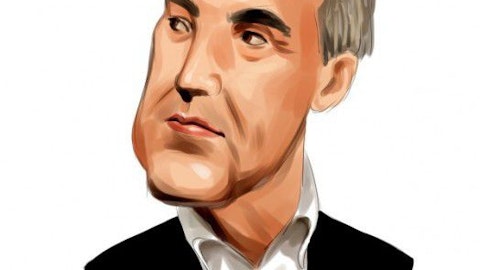Hao Shen: Great. And just a quick follow-up. So the Phase 2 expected by second half, what exactly needs to happen before the Phase 2 can be initiated?
Talat Imran: Sure. So the guidance we got from the FDA was to run a repeat dose GLP study of 28 days. We’re going to be doing that here in the first half of the year and completing it. And then submitting and hopefully getting that Phase 2 started, as you said, in the second half of ’23.
Hao Shen: Okay. Makes sense. Thank you.
Talat Imran: Yes, absolutely.
Operator: Thank you. Please standby for our next question. Our next question comes from the line of Wedbush, Andreas. Your line is open.
Andreas Argyrides: All right. Hi, guys. Thanks for taking our questions here. So just two for us here. So how does the Celltrion deal in the right of first negotiation indicate what the strategy would be for the company and the pipeline of biosimilars going forward? And then secondly, is the Celltrion deal indication specific, I mean could you still partner out RT-111 for a different indication? Thanks.
Talat Imran: Sure. I’ll take the second one first. It’s a short answer. No, it is not indications specific. It’s for ustekinumab biosimilar or ustekinumab in general. So it’s that entire drug, if you will. And any indications you could pursue with it. So CD, ulcerative colitis or psoriasis. In terms of what the relationship with Celltrion implies, I think from our perspective implies that what we’re doing is valuable and there is an interest in supporting us both in the clinical and commercial development from Celltrion, but also potentially taking over commercial rights as well. I think as we look ahead to additional deals, this could be the flavor of how things are done. And as we generate more data, I think there is a potential that pharma companies will be less inclined to enable us to compete against them as opposed to working with us.
Andreas Argyrides: Okay, great. Thanks. Congrats on all progress. Thanks.
Talat Imran: Thank you.
Operator: Thank you. Please stand by for our next question. Our next question comes from the line of Annabel Samimy with Stifel. Your line is open.
Annabel Samimy: Hi. Thanks for taking my questions. Thanks. Good progress. So on the Celltrion partnership again, are there any key requirements or metrics that Celltrion is looking for as far as the Phase 1 is concerned like they’re seeing bioavailability or delivery success? And do you need repeat dosing for that trial before you offer it up for an option or right of the first negotiation. And then secondly, any further discussion with FDA regarding the design of the Phase 2 trial for 102, I think you’re contemplating three different doses. Do you have a sense of the dosing range, the timeframe, how large it could be, et cetera, or was this primarily about 505(b)(2) pathway? Thanks.
Talat Imran: Sure. So we should not need to do repeat dosing to complete the Phase 1. It’s a single dose study with probably as the doses that we use for the RT-111 program for the Phase 1. There is nothing in particular beyond showing bioavailability similar to a subcutaneous injection of their CT-P43 ustekinumab biosimilar. I think that’s what everyone’s been looking for, what we would like to demonstrate as well. And just to remind everyone, this would be the first time us or really anyone has been able to demonstrate systemic bioavailability of an orally administered monoclonal antibody. So this is a big milestone for the company and I think hopefully that’s sufficient to garner interest from Celltrion as we get into the option period.
